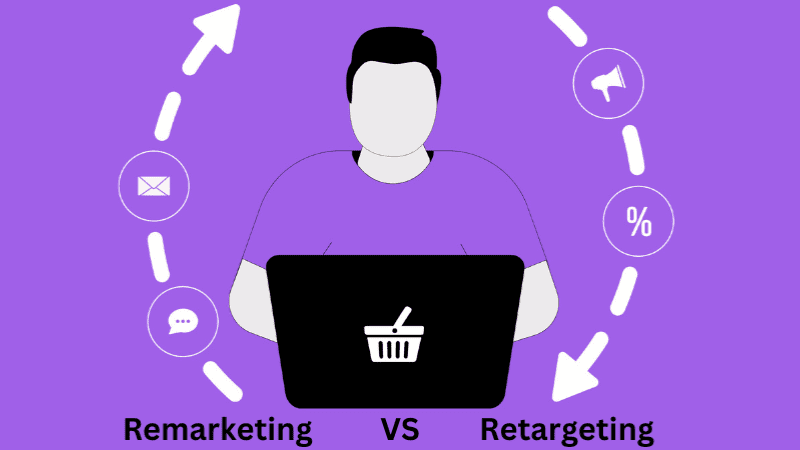Remarketing VS Retargeting: the terms are often used interchangeably, yet while they share a similar goal of driving conversions, they use different methods and approaches. Understanding the differences between the two options will help you determine whether one is a better option or if a strategic combination of both might be the most effective approach for your marketing strategy. With that, you can enhance your efforts to convert potential customers and re-engage existing ones.
Staying in Your Customer’s Orbit: Understanding Retargeting
Retargeting refers to serving online ads to users who have previously visited your website but didn’t take any action, such as making a purchase or signing up for notifications for sales. It uses cookies to track visitors, allowing you to display custom and targeted ads on other sites they visit. This increases visibility, keeps your brand consistently top-of-mind, and encourages potential customers to return to your site and complete their intended actions. Here are examples of retargeting:
- A visitor checks out a pair of shoes on an e-commerce website but leaves without purchasing anything. They will then start seeing ads featuring those shoes while they browse other sites.
- Someone reads an article on your blog but doesn’t subscribe to your email list. You retarget them with an ad offering a special discount for anyone signing up for your newsletter.
- Visitors add items to their shopping cart but don’t complete the purchase. You send them ads reminding them of their cart contents, encouraging them to return and finish their purchase.
Polite Persistence: Understanding Remarketing

Remarketing is a broader term with some elements of retargeting but includes marketing strategies such as email or SMS campaigns. It can involve reaching out to a previous customer or someone who has interacted with your brand by engaging with a CTA on your site or saving a social post. Remarketing aims to nurture leads and generate sales by reconnecting with these potential customers. Here are examples of remarketing:
- Send a follow-up email to a customer who has made a purchase and show them a new version of what they purchased in the past or a complementary product or service that may interest them.
- Create a targeted email campaign for users who haven’t engaged with your content for a while, offering discounts or upgrades to re-engage them.
- Run ads on social media platforms directed at users who have interacted with your brand on Facebook or Instagram by liking or commenting on posts but haven’t made a purchase yet.
So, The Better Option Is…

Whether remarketing or retargeting is better depends on your business goals, target audience, and marketing strategy. Retargeting can be effective if you prioritize bringing back warm and potential leads who have previously and recently visited your website. On the other hand, remarketing should be your first approach if you want to create a deeper relationship with your audience and push past their hesitance to purchase for the first time or entice them to purchase again.
Remarketing VS Retargeting: Both are Winners When Done Well
The goal for both is re-engaging potential customers. Fat Guy Media will help you evaluate your marketing objectives and customer behavior and help you choose the approach for turning leads into conversions and profits.


